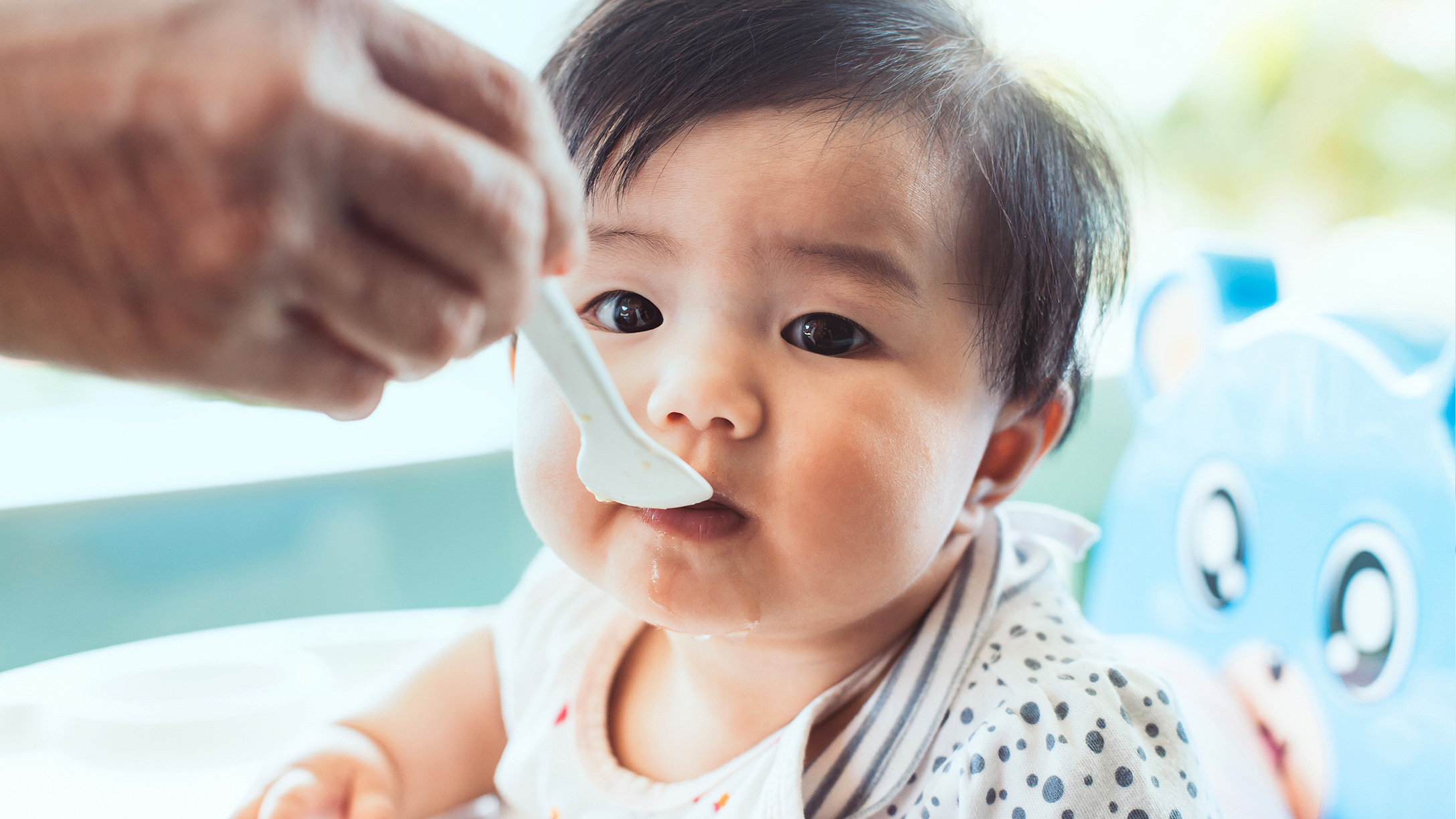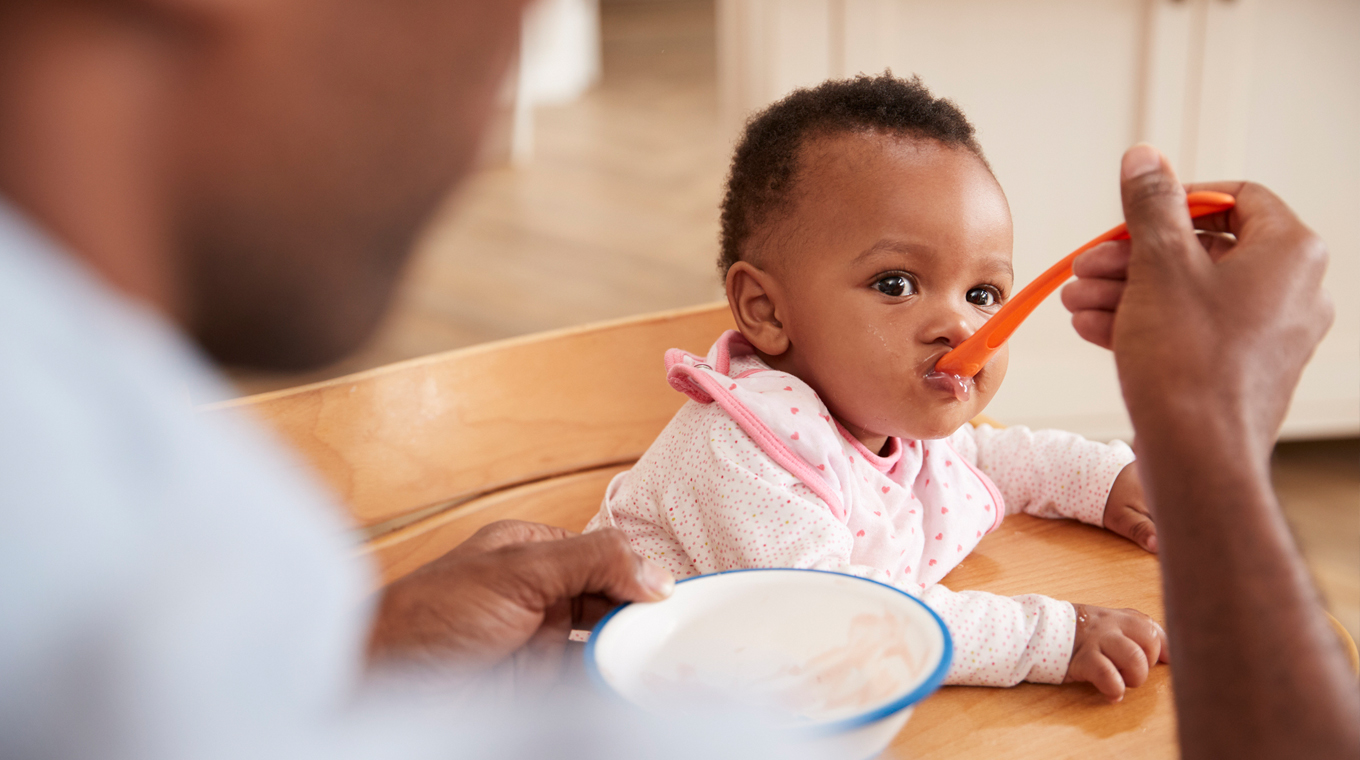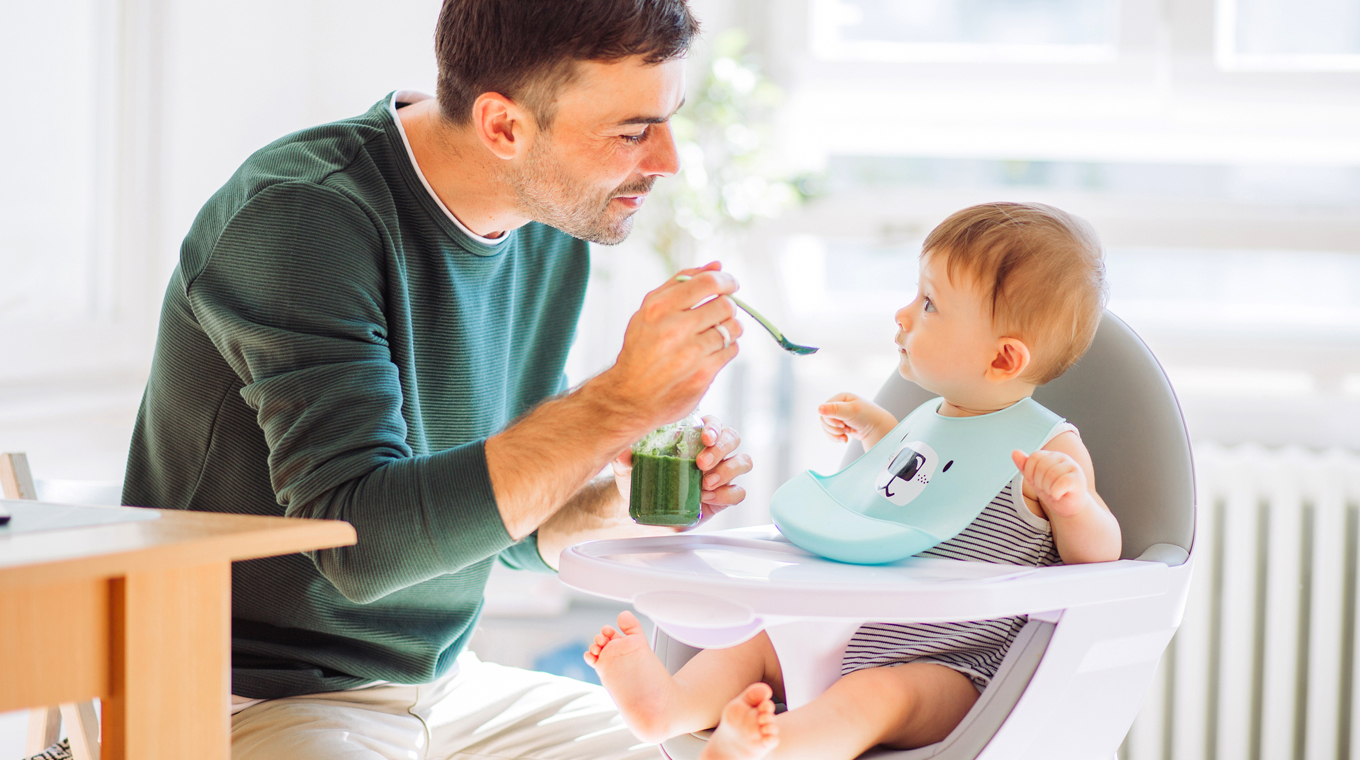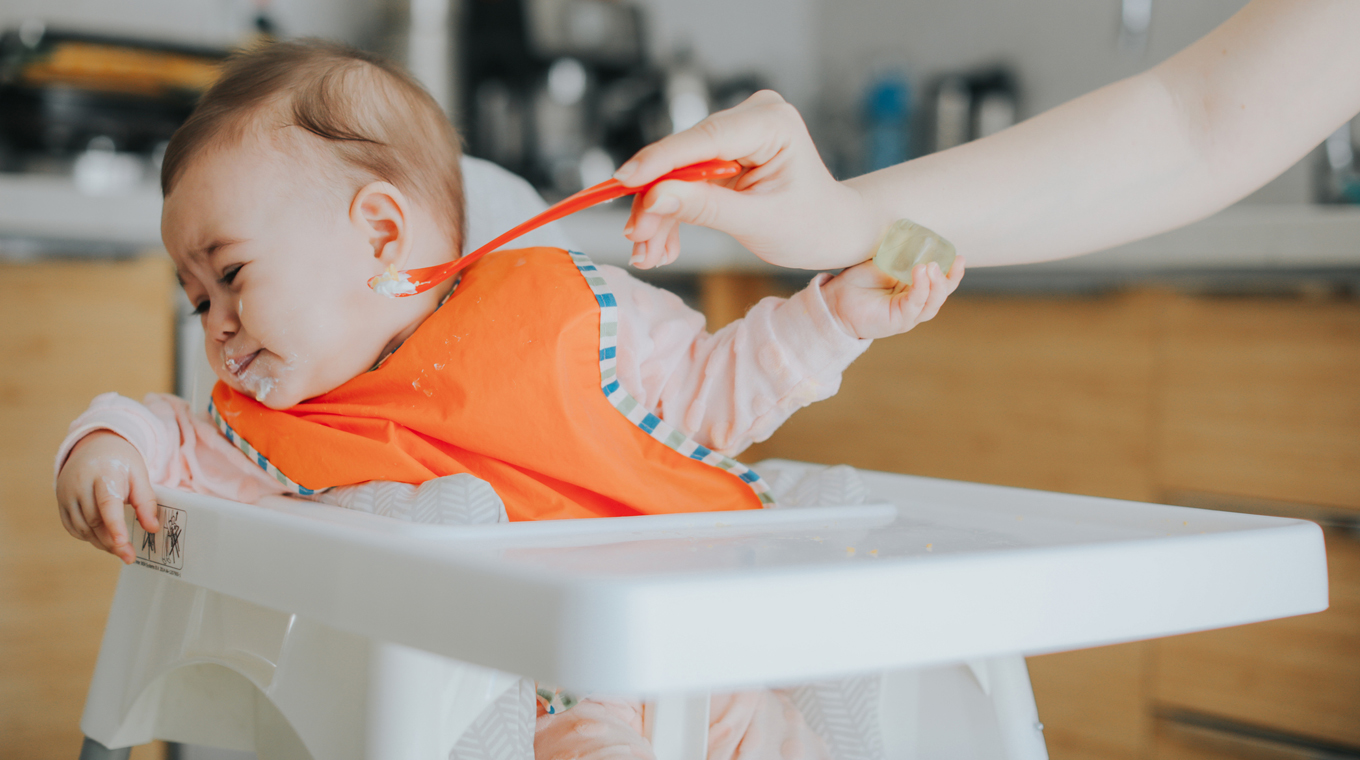
In this article
When we have a baby, we often dream about what it will be like to witness them trying different foods and seeing the joy on their face when they taste something they really love for the first time, like their first ice cream cone. But when it actually comes time to introduce solid food to our babies, it can be a bit overwhelming. It seems like as soon as we get our feeding routines down, it’s time to switch things up all over again. And since there’s so much conflicting information on the internet, when can a baby eat solid food?
Here’s what you need to know before getting your baby to eat something other than their liquid diet. It can definitely seem like a lot at first, but it’s easier if you take it one step at a time.
Tips for starting baby on solid foods: When to start

First of all, what is a solid? Basically, it’s any food that isn’t the formula or breastmilk that has made up your child’s entire diet so far. Even the classic jars of purêed baby food count as solids, as does baby cereal and oatmeal. There’s some conflicting information out there about exactly when the best time to introduce solid food, but the American Academy of Pediatrics (AAP) recommends waiting until after they are 4 months old — or the 6-month milestone if you’re breastfeeding. This definitely depends on your baby, though; some are ready for solid foods at 4 months, while others will take a little bit longer.
It’s definitely important to consult your pediatrician before starting solid food, in case there are any conditions that are specific to your child. But there are also a few signs of readiness you can look for, too.
“When a baby is ready to start eating food, he will put his hands in his mouth, and you will see him actually making chewing motions,” pediatrician Dr. TJ Gold told The New York Times.
Other signs of readiness include:
- Having good head control
- Being able to sit up with support (including in their high chair)
- Showing interest in your food when you eat
- Opens their mouth when food or a spoon comes near it
How to start solid food for babies

There are a few different methods of how to start solid food for babies. There’s baby-led weaning, which involves introducing the same food you’re eating, just cut up into small pieces, and letting the baby take the lead. Some parents choose to start with traditional jarred baby food, and others will purée their own at home. It depends on what you decide is best for you and your baby — and don’t be afraid to try something else if the method you start out with doesn’t work for you.
One of the most important parts of starting solids, though, is making sure you are avoiding any food choking hazards. This includes cutting foods into small pieces, making sure food is cut up enough to mash it with a fork, removing seeds and pits from fruit, and cutting round foods like grapes up into small pieces so they won’t block your baby’s airway.
And as far as a baby solid food schedule goes? There’s nothing hard and fast to stick to, but Stanford Children’s Health recommends 1-2 tablespoons of fruit, vegetables, infant cereals, and protein at a time to start, keeping foods as liquidy as possible at first before gradually thickening them up. Their intake will then increase with age until they’re eating solid foods at breakfast, lunch, and dinner with a few snacks in between.
“With my oldest, I learned a little rhyme to guide food decisions during the first year: Food is fun until they’re one,” mom Gretchen Bossio wrote for Mom.com. “This saying has reminded me that exposure and experimenting are key, but full meals are not.”
Issues to look for after you introduce solid food

Worried about a potential food allergy in baby or other issues that might arise? That’s totally normal, and something you should be looking out for from day one of your adventure starting solids. According to the CDC, it’s best to feed them the same food for 3-5 days in a row before moving onto something else, so you can see if they have an allergy or not. Also, if there’s a history of certain food allergies in your family, it’s good to check with a pediatrician before offering those foods for the first time.
But how do you know your baby’s suffering from a food allergy? The AAP recommends looking out for signs like hives, eczema, swelling, breathing problems, sneezing, wheezing, and throat tightness, and if these symptoms seem to be affecting multiple parts of the body, it could be anaphylaxis and time to get medical attention ASAP.
Tummy issues are another problem that can come up after starting solids. Babies may end up constipated, but that can be remedied with small amounts of water or fruit juice, as well as pureed prunes or peas.
There’s also the chance that your baby refuses solid food, which isn’t surprising at first — after all, they’re used to drinking out of a bottle, and this is totally new to them. Be persistent and keep trying. They’ll get the hang of it eventually, but if they don’t, or you’re feeling concerned, reach out to your pediatrician.
It’s definitely a lot to take on at first, but before you know it, your kid will be a solid food pro. Try to have fun with it — this is an exciting time in your baby’s life!






